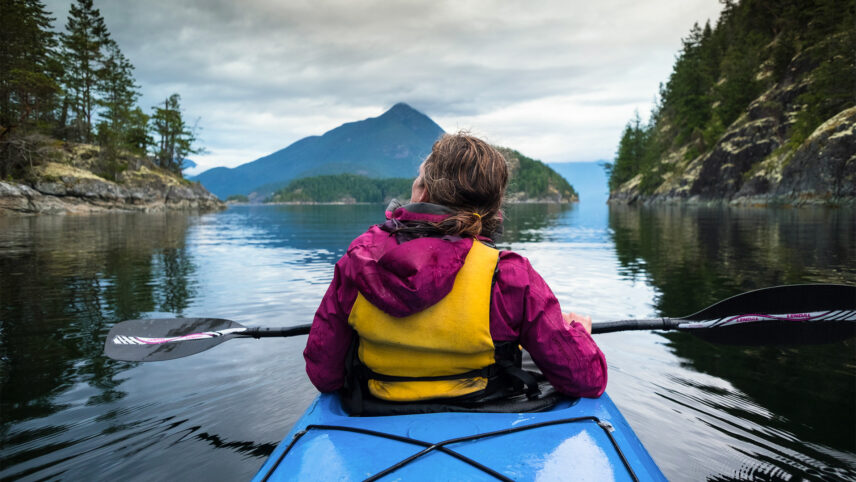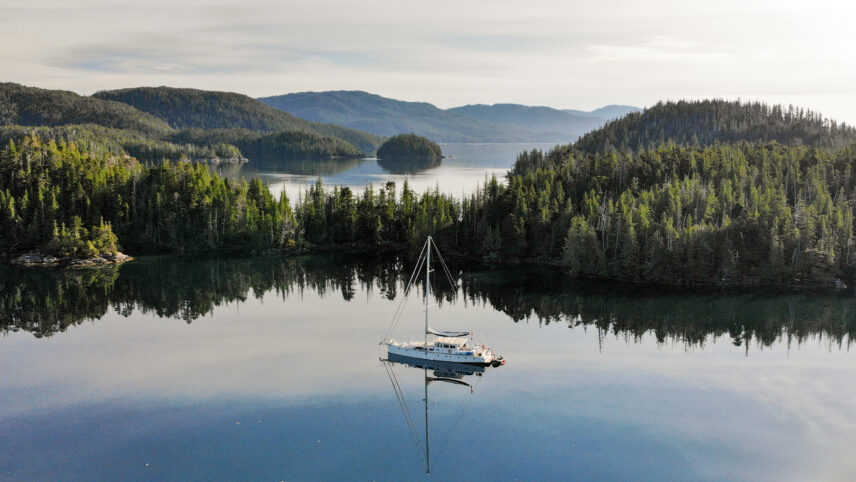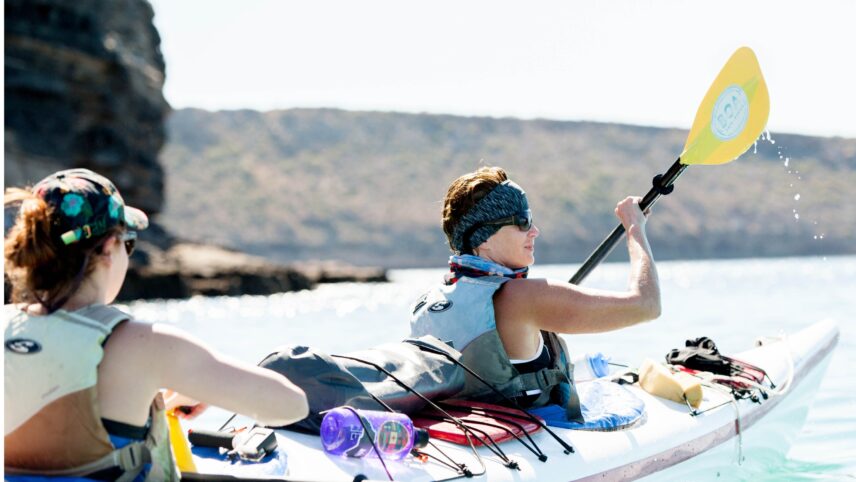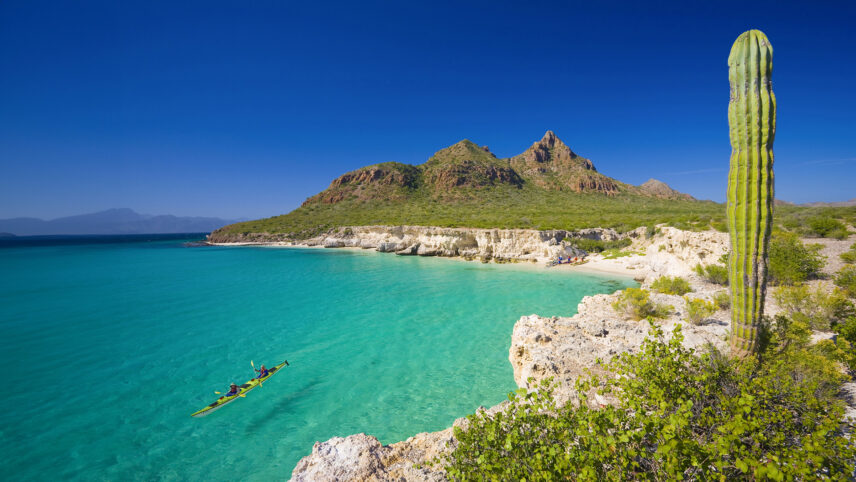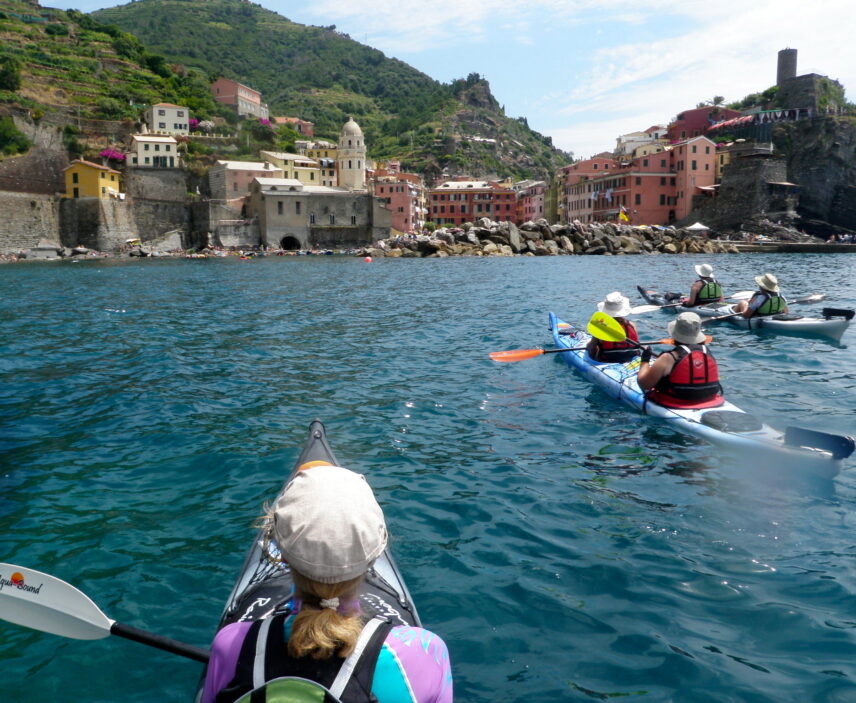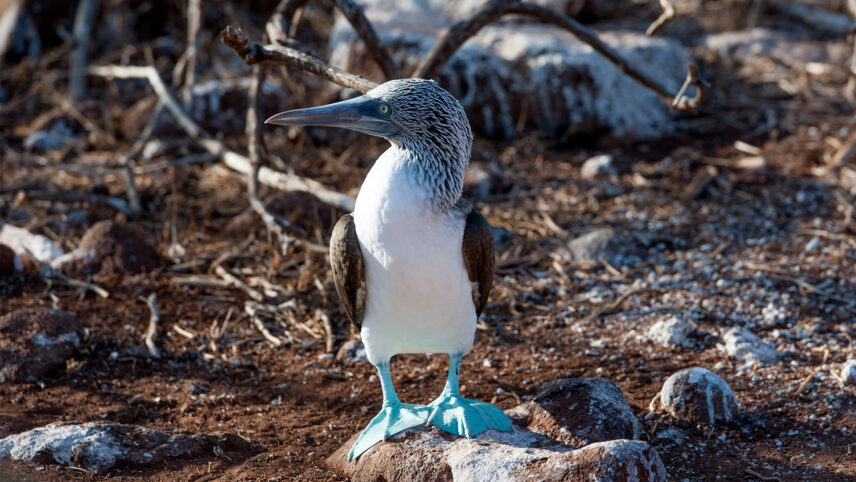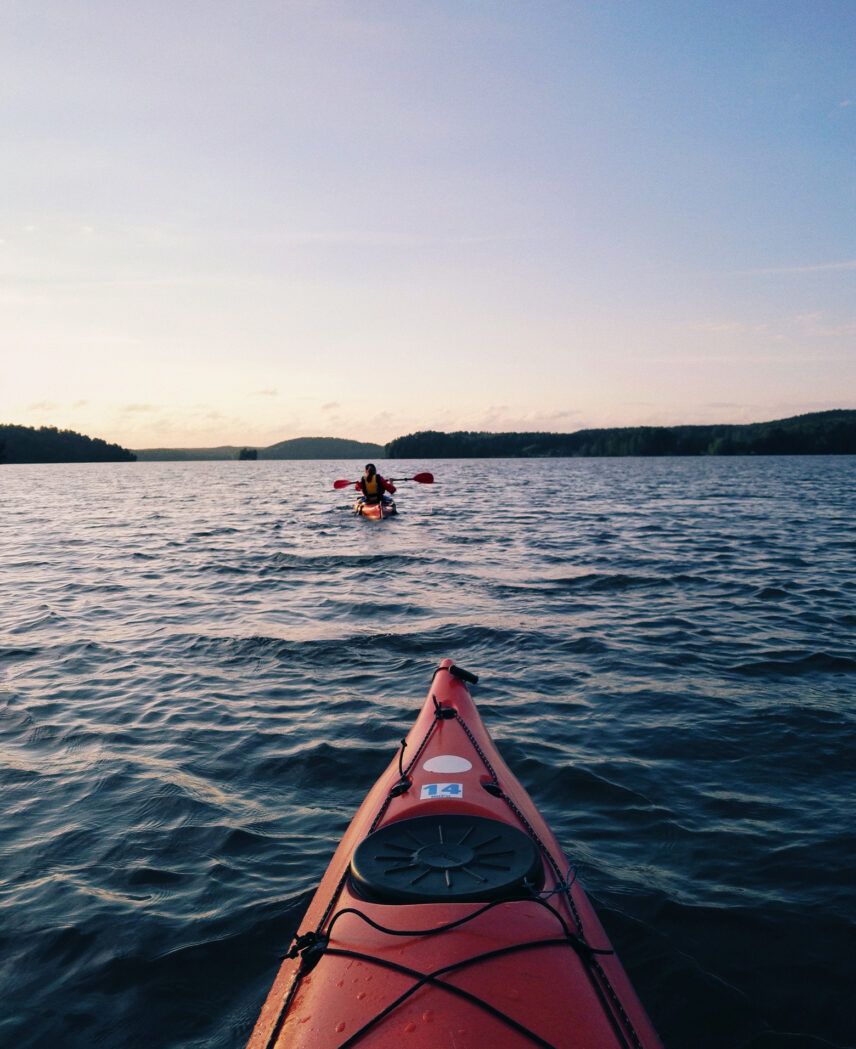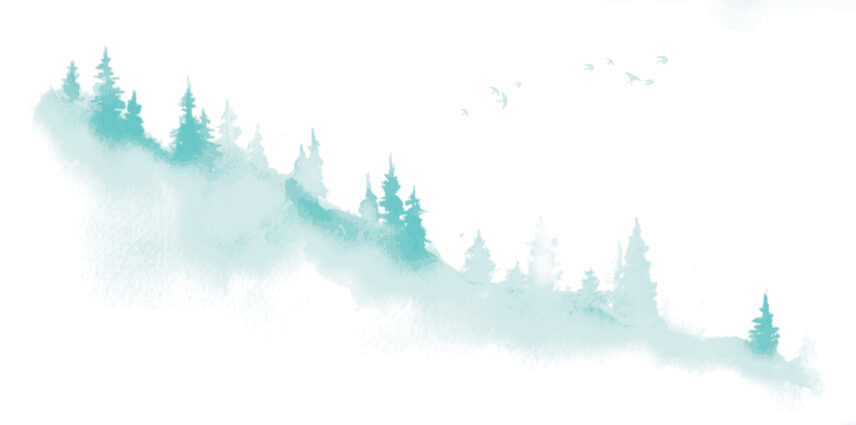

Trip Overview
Departures
Trip Dates + Prices
Duration
8 Days
Activities
Camping
Cultural
Kayaking
Wildlife Viewing
Physical Rating
Challenging
Be the First to Know
Interested in this trip? Get on the list for exclusive information and updates.
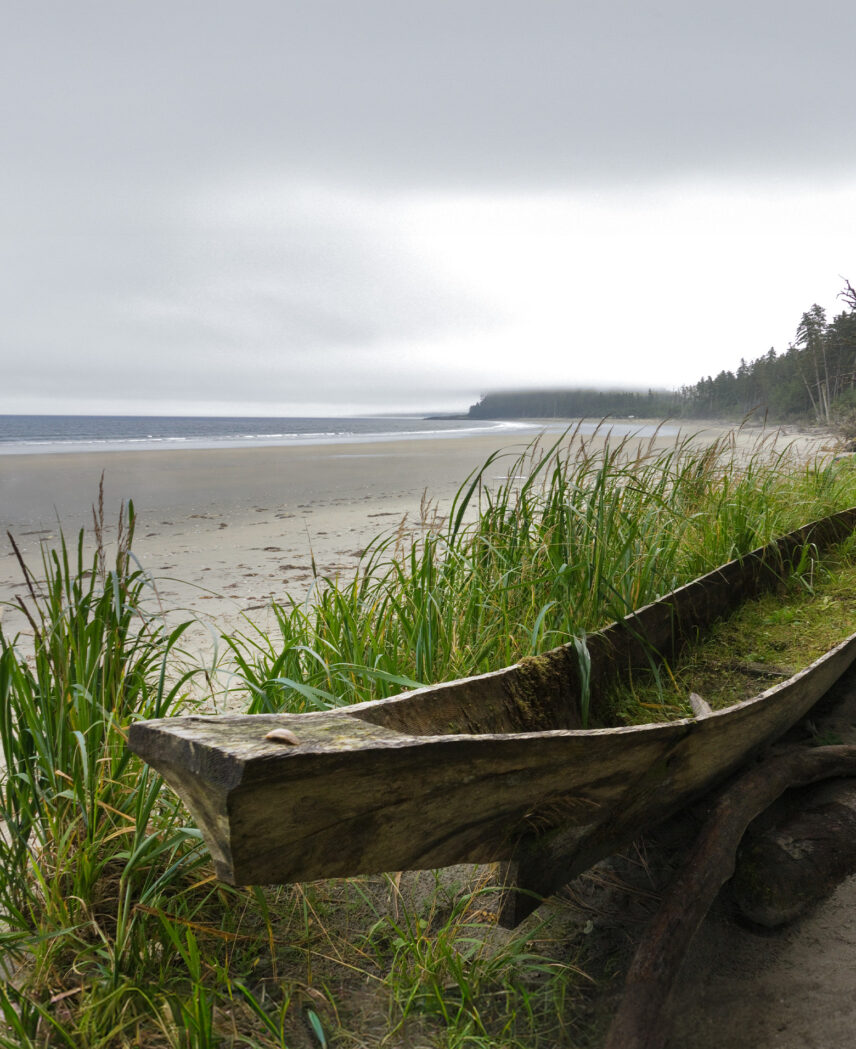

Return to the Wild
Tandem kayaking and camping in this pristine pocket of paradise is an enveloping wilderness experience. Located 80 miles (129 km) off Canada’s northwest coast, this precious cluster of islands is home to the resilient Haida, raucous seabird colonies and the Gwaii Haanas National Park Reserve. The Haida First Nation waterways are as deep as the generational history held within the carvings of the ancient totem poles in the distance.
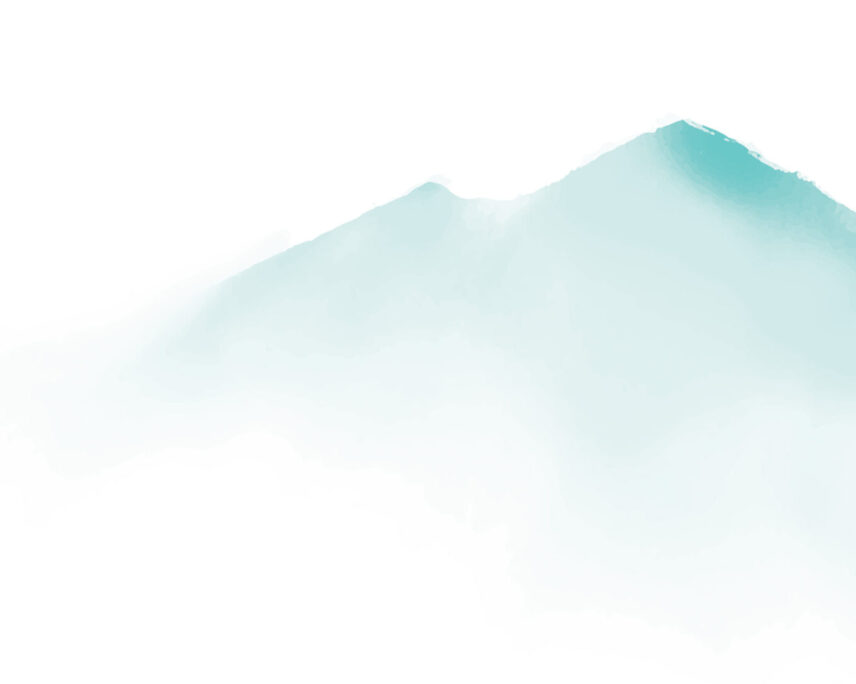
Experience the “Canadian Galápagos”

Sync Yourself With Nature
Within the old-growth forest’s verdant depths, black bears leave their silent footprints. At the water’s edge, sea lions and seals appear and disappear in slick, silver descents. If you want to sync yourself with nature, Gwaii Haanas immediately embraces those within its reach in a hug of mist, bird song, cultural shadows and truly wild encounters.
My spirit is renewed, my daily life is now graced with thoughts of the peacefulness I felt. The women I shared this journey with touched my heart and soul. This trip goes to the top of my pile of ‘trips of a lifetime.’”
Faye
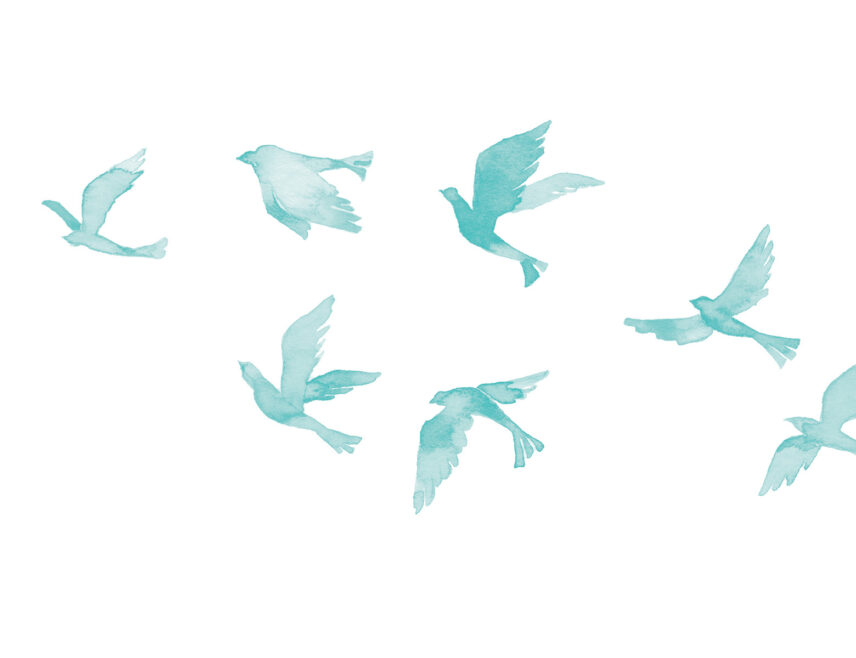
Itinerary
-
Arrival Day
Sandspit
The Dream Begins
We advise arriving in Sandspit one day before the trip departs as this remote coastal environment is known for its diverse and unpredictable weather conditions. Transportation to (and from) Gwaii Haanas may require last-minute adjustments from transport providers.
Upon arrival, check in with the Moresby Explorers office, which is conveniently located next to Seaport Bed & Breakfast. They will confirm the details of our Wild Women group rendezvous for Day 1.
It’s time to get into the groovy groove of supernatural British Columbia!
Included Meals
None
Accommodations
Tonight’s stay is not included in the trip price. We recommend booking your accommodations as soon as possible. Local recommended options include Seaport Bed & Breakfast or Bay View Garden Oceanfront Guesthouse.
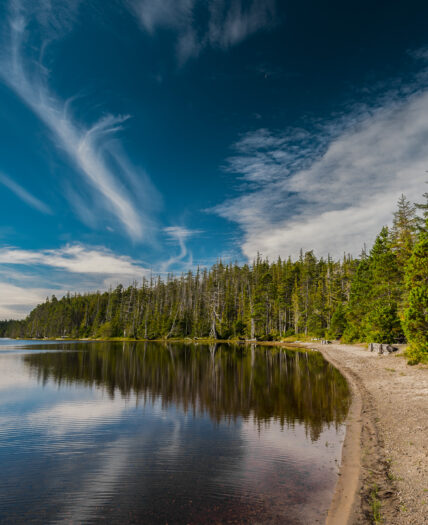
-
Day 1
Getting There
Setting up Camp
A shuttle van will pick us up at our individual accommodations around 7:30 a.m. Be prepared for one hour of bumpy, lumpy logging roads to Moresby Camp, a small bay on Cumshuwa Inlet. Here, we board a Zodiac for a super scenic two-and-a-half-hour ride along the coast of Moresby Island to Wanderer Island (how great is that name?), just north of Burnaby Narrows.
Upon arrival at our first remote campsite, we set up camp and have a thorough kayak and safety orientation. This is a participatory trip, which means everyone is expected to help out with the critical aspects that help a camp run smooth as pudding—this includes erecting tents and doing dishes! (But no cooking!) Chores complete, we can swap travel stories over lunch before sliding our kayaks in to begin exploring the deep waters surrounding our camp.
Included Meals
Lunch and dinner (Breakfast may be included in your hotel or B&B stay)
Accommodations
Tent camping Wanderer Island
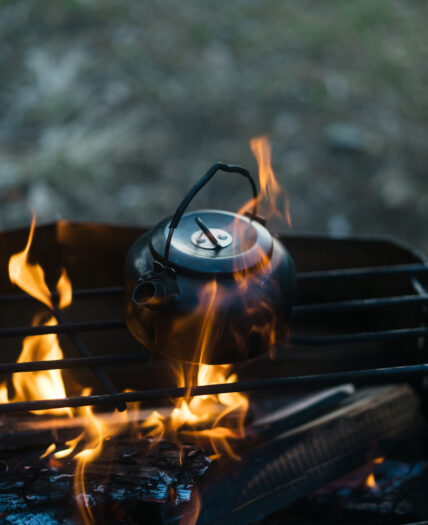
-
Day 2
Burnaby Narrows
See the Sea Stars Below
After a filling breakfast, our Haida Gwaii kayaking expedition begins as we set course for Burnaby Strait and Dolomite Narrows (Burnaby Narrows). The dramatic profile of Mount Yatza dominates the skyline as we round the southern tip of Burnaby Island. It’s the highest point (7,612 ft/2,320 m) in Moresby Island’s San Christoval Range.
As we float through the narrows by kayak, it’s easy to be totally immersed in this biological wonder. Be on high alert for scenes from Mother Nature’s 24/7 bird channel—bald eagles, cormorants, gulls, petrels and tufted puffins frequent this area. Humpback, minke and orca whales all cruise through here as well. Don’t forget to look down—Burnaby Narrows is synonymous with the highest density of intertidal life in the world. Below the surface brightly colored sea stars pepper the shallows in an unreal way.
Included Meals
Breakfast, lunch and dinner
Accommodations
Tent camping on Wanderer Island
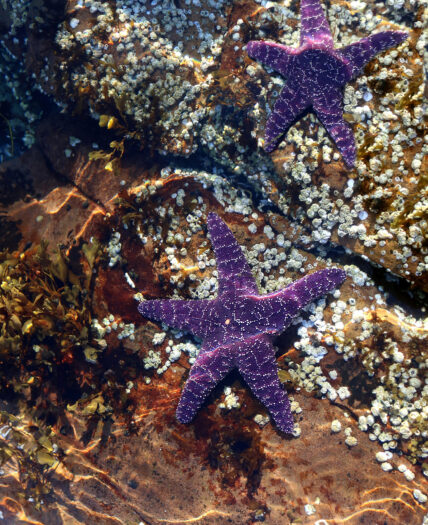
-
Day 3
Skincuttle Inlet
Rewilding Together
Awake with the birds this morning as we take advantage of a big day of paddling. After breakfast and another round of coffee, we load our kayaks and push off into the wilds. We slice between Burnaby and Moresby Islands, cross Skincuttle Inlet and eyeball the ecological reserve of the Copper Islands to the north. Some of the low-lying isles of this area have surprise pockets of beach but are mostly characterized by rocky shorelines and tall stands of Sitka spruce, Western red cedar and Western hemlock. Birders, be ready to tick off ancient murrelets and Cassin’s auklets from your list!
We also pass by the village site of Hagi (Xaagyah) on Bolkus Island and the ghostly abandoned small-scale copper mine at Jedway as we head south toward our next campsite to take five for the day.
Included Meals
Breakfast, lunch and dinner
Accommodations
Tent camping (location dependent on the day’s paddle and weather)
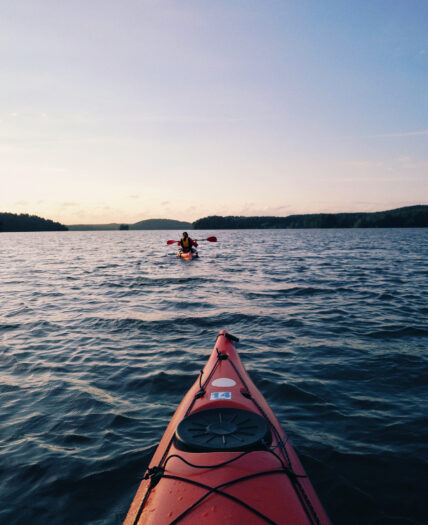
-
Day 4
Deluge Point, Ikeda Cove and Collision Bay
Exploring the Silent Spaces
Nourished by another hearty breakfast in the wild, we continue south using full forearm power to cross Collison Bay, the site of one of the earliest European settlements on the islands. As we paddle toward Goodwin Point, we cruise past the Rankine Islands ecological reserve where innumerable seabirds have nesting sites.
Near to our campsite, we drift by the former village site of Kaidju at Benjamin Point. Here, we pull up our kayaks to take in a short walk across the point from the protected north cove. This will lead us to a remarkable view of the point’s winter storm-battered south shore. Winters can be fierce and next to impossible to imagine in the sweet balm of summer.
Included Meals
Breakfast, lunch and dinner
Accommodations
Tent camping (location dependent on the day’s paddle and weather)
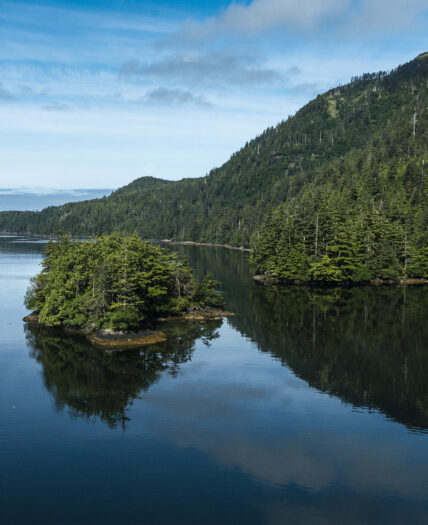
-
Day 5
Benjamin Point to Houston Stewart Channel
Paddling into Time
The reward of a multi-day sea kayak expedition is simple—it means there are multiple opportunities to spot bald eagles, orcas, sea lions and tufted puffins!
Rounding Benjamin Point, we get our first view of Kunghit Island, one of the largest seabird islands on the British Columbia coastline. This isle is of global significance for the ancient murrelet population, pigeon guillemot and peregrine falcon.
As we move into Houston Stewart Channel, we enter a narrow passageway from Hecate Strait to the Pacific and paddle into the arresting territory of the Kunghit Haida and their last mighty chief, Ninstints. Here, whispers of oral traditions, carved mortuary and memorial poles tell the visual story of the past.
Included Meals
Breakfast, lunch and dinner
Accommodations
Tent camping on Ross Island
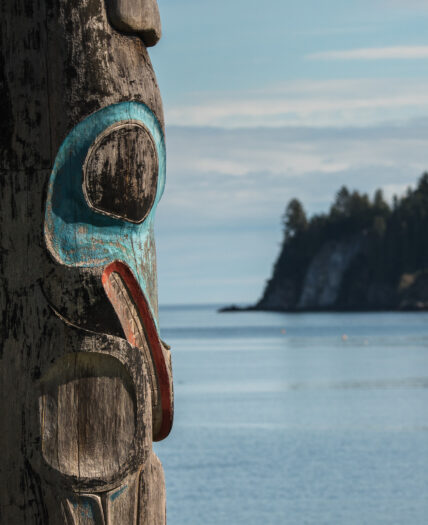
-
Day 6
Houston Stewart to Louscoone Point
Paddle Strokes and Brushstrokes
Riding the tide through the remainder of Houston Stewart, it’s an ever-expanding view of the denim-blue Pacific Ocean until Anthony Island comes into view to the west.
After rounding the southern tip of Moresby Island through Cape Fanny, we head toward our camp at Louscoone Point. This point is an ideal launch pad for our visit to the designated UNESCO World Heritage Site—the ancient village of SGang Gwaay (Red Cod Island) on Anthony Island.
Every day on the water is akin to paddling deep inside an Emily Carr watercolor. The world-renowned Canadian artist painted over 200 works during her exploration of Haida Gwaii (known then as the Queen Charlotte Islands) in 1912.
Included Meals
Breakfast, lunch and dinner
Accommodations
Tent camping on Louscoone Point
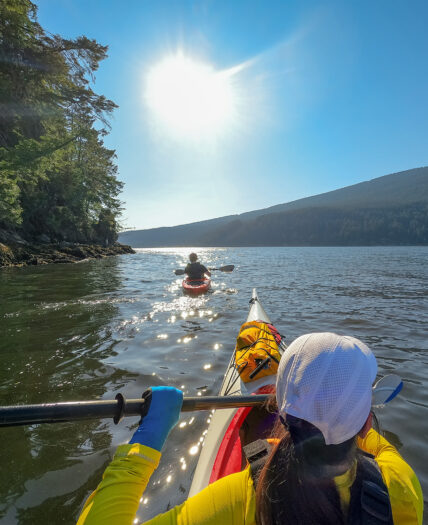
-
Day 7
The Totems of Sgang Gwaay
Meet the Caretakers of History
A short but unforgettable paddle into history takes us past Adam Rocks and into the protected cove on the west side of the island. As we enter the time-scraped village, it’s impossible to not be forever moved by the haunting power and story of the standing poles. We spend as much time as possible exploring the village and visit with the Haida Watchmen, who are Haida caretakers dedicated to protecting the ancient sites of the park and designated UNESCO Heritage Site.
Later, we’ll paddle through Raspberry Cove’s splendor before pulling up to our site for the night.
Included Meals
Breakfast, lunch and dinner
Accommodations
Tent Camping on Ross Island
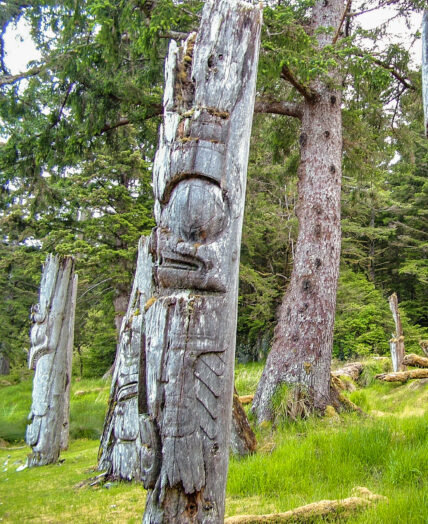
-
Day 8
Return to Sandspit
Reflective Cups of Coffee
Sigh, it’s the final day of our kayaking journey. Absorb every bit of our surroundings as we enjoy our last leisurely morning together on Ross Island. After we pack up personal gear, Moresby Explorers will pick us up for our two-and-a-half-hour return by Zodiac and van shuttle (one hour).
We arrive in Sandspit in the late afternoon or early evening, so please plan your flights accordingly or choose to spend an additional night in Sandspit to digest the incredible trip we had together and enjoy British Columbia’s best a little longer!
Included Meals
Breakfast and lunch
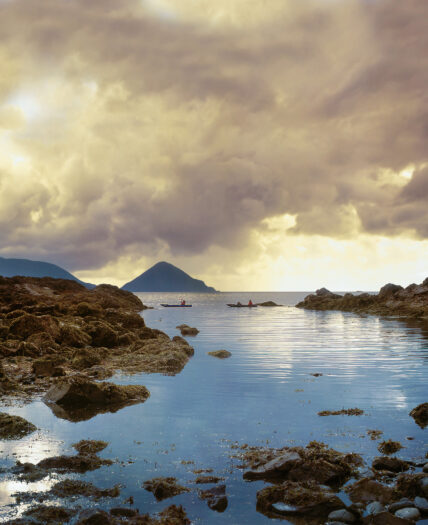
Take a Deeper Dive
Want all the details in one handy package? Download the full itinerary here.

What’s Included
- Two energetic professional sea kayak guides (lead guide will be female, the assistant guide may be female or male)
- Transportation in and out of Gwaii Haanas National Park Reserve
- Expedition tandem kayaks, PFDs (life jackets), paddles and spray skirts
- All camp meals prepared by gourmand guide staff
- Group camping equipment (three-person, three-season mountaineering tents)
- Shared tent accommodation (based on double occupancy)
- National park user fee
- Comprehensive on-trip resource library
- Group first aid kit, safety equipment and satellite phone
What’s Excluded
- Airfare to Sandspit, BC (YZP)
- Pre- and post-trip accommodation in Sandspit (must be booked independently and in advance)
- Sleeping bag, sleeping pad and dry bags. A comprehensive packing list will be provided
- Tips for your guides
- Personal Medical and Evacuation Travel Insurance (mandatory) and Trip Cancellation Travel Insurance (highly recommended)
Please Note:
Itineraries may be subject to change without notice due to weather and other environmental conditions. Please review our Booking Terms.

Trip Details
Know Before You Go
Click HERE for all of the logistical details you’ll need to know prior to departure—including the packing list, arrival and departure details and suggested tipping information.
Arrival and Meet Up
You will need to book accommodations for the night of July 6th or July 20th (depending on which trip you are registered for) as soon as possible as Sandspit has limited accommodations and they are very busy in the summer months. See pre-trip accommodations recommendations.
You will not meet your Wild Women trip guides in person until you reach the park (after the Zodiac ride). Please make sure you read the packing notes carefully to ensure you have all your gear organized as instructed.
Luggage you don’t need with you on the expedition can be left either at the Moresby Explorers office in Sandspit or at your accommodation.
Although there will be no official meeting on July 8th, a “get to know each other” group dinner is a nice touch to begin your trip. Connecting with your fellow Wild Women on the trip’s Facebook page before your trip is a great way to coordinate a meet-up.
The Haida Gwaii kayaking tour starts from the community of Sandspit, BC, Canada and can be accessed by plane, train or automobile; however, a ferry will be required for those not flying directly from Vancouver, BC (airport code: YVR). You can book a flight from Vancouver into Sandspit airport code: YZP.
Camp Life
You will be expected to participate in the team concept of daily chores and responsibilities such as the food cache, meal prep, clean up, setting up camp, collecting firewood and drinking water, etc. You should be able to comfortably carry up to 20 to 30 pounds (9 to 14 kilos), as kayaks must be placed above the high tide line nightly.
Departures
We highly recommend that you make arrangements to stay in Sandspit upon return from the trip and book your ferry and flight for the day after the kayak trip (or you can stay longer and explore this magical place).
This kayaking tour departs from the community of Sandspit, BC, Canada, which can be accessed by plane or automobile; however, a ferry will be required for those not flying directly from Vancouver, British Columbia. This remote coastal environment is exposed to diverse and sudden weather conditions. Transportation to/from Gwaii Haanas may require last-minute adjustments from transport providers. For these reasons, we require all travel arrangements to be made no later than the day before this trip’s start date. We also request that you depart the island no sooner than the day after the last scheduled day of the trip. If you have any questions, please contact us.
The Wild Women Way
If you’re wondering how we roll, it’s together. The Wild Women Way is our modus operandi, our mantra and our rock solid foundation. You can learn more about our Wild Ways HERE.
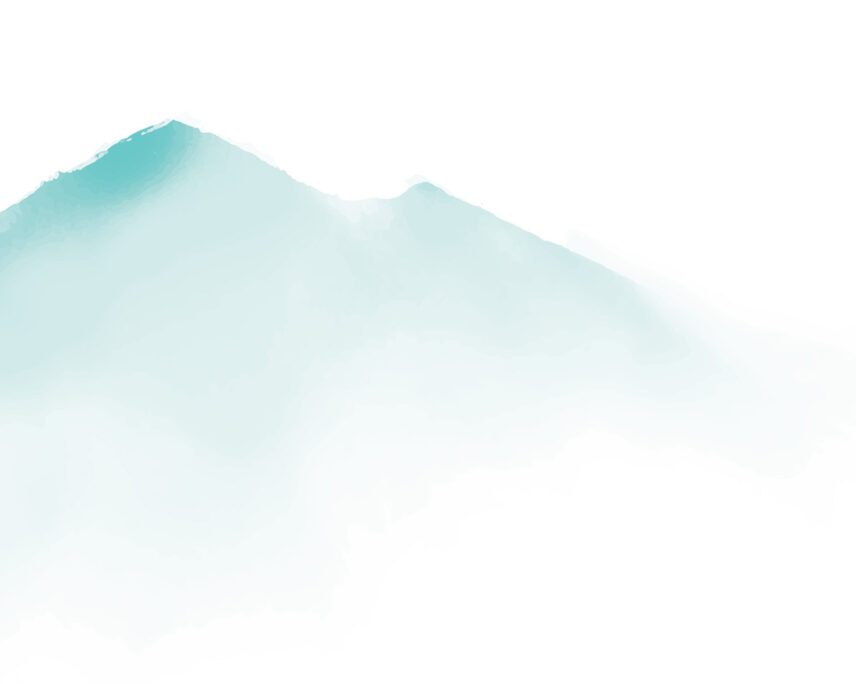
How We Support You
Ready for a big adventure? We’re in it together. This is a backcountry sea kayaking expedition intended for intermediate to advanced paddlers. You must have some previous backcountry camping and sea kayaking experience on open water in various weather conditions and be comfortable wearing a spray skirt and performing a wet exit. Yes, it’s a challenge, but you’re never alone. Like thousands of women before you, you’ll draw on strength you didn’t know you had and come out feeling like the goddess you are.
Still have questions or concerns? Let’s talk about it.
What the Trip Entails
- You must have the endurance to paddle 4–6 hours each day and be prepared to haul tandem kayaks from the shoreline
- Daily distances will vary from 5 to 12 miles (8–12 km)
- Tandem expedition kayaks are used because of their added speed (at least 25% faster than singles), and their stability ensures safety and extra comfort as well
- Comfort with wilderness camping: you will be sleeping in a spacious three-person mountaineering tent (with just two women per tent) and using the same washroom facilities as the bears
- If you do not know how to swim, please let us know!
- Physical Rating: Challenging (Serious fitness level required. Trips are the most physically challenging with approximately 5 to 10 hours of physical activity each day. These trips require a high degree of fitness and even if you exercise regularly, they typically will require more specific conditioning and a specialized training routine depending on the trip.)
